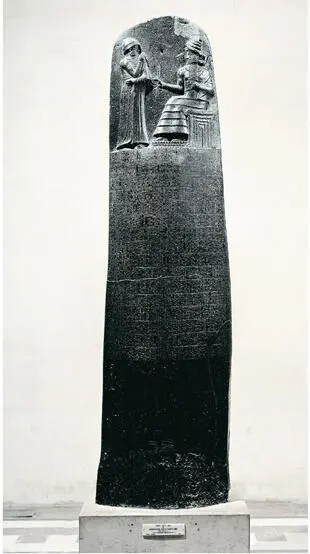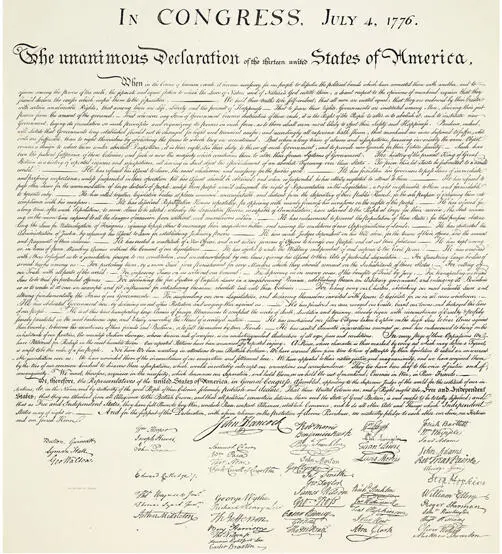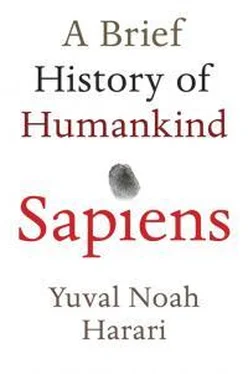The problem at the root of such calamities is that humans evolved for millions of years in small bands of a few dozen individuals. The handful of millennia separating the Agricultural Revolution from the appearance of cities, kingdoms and empires was not enough time to allow an instinct for mass cooperation to evolve.
Despite the lack of such biological instincts, during the foraging era, hundreds of strangers were able to cooperate thanks to their shared myths. However, this cooperation was loose and limited. Every Sapiens band continued to run its life independently and to provide for most of its own needs. An archaic sociologist living 20,000 years ago, who had no knowledge of events following the Agricultural Revolution, might well have concluded that mythology had a fairly limited scope. Stories about ancestral spirits and tribal totems were strong enough to enable 500 people to trade seashells, celebrate the odd festival, and join forces to wipe out a Neanderthal band, but no more than that. Mythology, the ancient sociologist would have thought, could not possibly enable millions of strangers to cooperate on a daily basis.
But that turned out to be wrong. Myths, it transpired, are stronger than anyone could have imagined. When the Agricultural Revolution opened opportunities for the creation of crowded cities and mighty empires, people invented stories about great gods, motherlands and joint stock companies to provide the needed social links. While human evolution was crawling at its usual snail’s pace, the human imagination was building astounding networks of mass cooperation, unlike any other ever seen on earth.
Around 8500 BC the largest settlements in the world were villages such as Jericho, which contained a few hundred individuals. By 7000 BC the town of Çatalhöyük in Anatolia numbered between 5,000 and 10,000 individuals. It may well have been the world’s biggest settlement at the time. During the fifth and fourth millennia BC, cities with tens of thousands of inhabitants sprouted in the Fertile Crescent, and each of these held sway over many nearby villages. In 3100 BC the entire lower Nile Valley was united into the first Egyptian kingdom. Its pharaohs ruled thousands of square kilometres and hundreds of thousands of people. Around 2250 BC Sargon the Great forged the first empire, the Akkadian. It boasted over a million subjects and a standing army of 5,400 soldiers. Between 1000 BC and 500 BC, the first mega-empires appeared in the Middle East: the Late Assyrian Empire, the Babylonian Empire, and the Persian Empire. They ruled over many millions of subjects and commanded tens of thousands of soldiers.
In 221 BC the Qin dynasty united China, and shortly afterwards Rome united the Mediterranean basin. Taxes levied on 40 million Qin subjects paid for a standing army of hundreds of thousands of soldiers and a complex bureaucracy that employed more than 100,000 officials. The Roman Empire at its zenith collected taxes from up to 100 million subjects. This revenue financed a standing army of 250,000–500,000 soldiers, a road network still in use 1,500 years later, and theatres and amphitheatres that host spectacles to this day.

16. A stone stela inscribed with the Code of Hammurabi, c .1776 BC.
Impressive, no doubt, but we mustn’t harbour rosy illusions about ‘mass cooperation networks’ operating in pharaonic Egypt or the Roman Empire. ‘Cooperation’ sounds very altruistic, but is not always voluntary and seldom egalitarian. Most human cooperation networks have been geared towards oppression and exploitation. The peasants paid for the burgeoning cooperation networks with their precious food surpluses, despairing when the tax collector wiped out an entire year of hard labour with a single stroke of his imperial pen. The famed Roman amphitheatres were often built by slaves so that wealthy and idle Romans could watch other slaves engage in vicious gladiatorial combat. Even prisons and concentration camps are cooperation networks, and can function only because thousands of strangers somehow manage to coordinate their actions.

17. The Declaration of Independence of the United States, signed 4 July 1776.
All these cooperation networks – from the cities of ancient Mesopotamia to the Qin and Roman empires – were ‘imagined orders’. The social norms that sustained them were based neither on ingrained instincts nor on personal acquaintances, but rather on belief in shared myths.
How can myths sustain entire empires? We have already discussed one such example: Peugeot. Now let’s examine two of the best-known myths of history: the Code of Hammurabi of c .1776 BC, which served as a cooperation manual for hundreds of thousands of ancient Babylonians; and the American Declaration of Independence of 1776 AD, which today still serves as a cooperation manual for hundreds of millions of modern Americans.
In 1776 BC Babylon was the world’s biggest city. The Babylonian Empire was probably the world’s largest, with more than a million subjects. It ruled most of Mesopotamia, including the bulk of modern Iraq and parts of present-day Syria and Iran. The Babylonian king most famous today was Hammurabi. His fame is due primarily to the text that bears his name, the Code of Hammurabi. This was a collection of laws and judicial decisions whose aim was to present Hammurabi as a role model of a just king, serve as a basis for a more uniform legal system across the Babylonian Empire, and teach future generations what justice is and how a just king acts.
Future generations took notice. The intellectual and bureaucratic elite of ancient Mesopotamia canonised the text, and apprentice scribes continued to copy it long after Hammurabi died and his empire lay in ruins. Hammurabi’s Code is therefore a good source for understanding the ancient Mesopotamians’ ideal of social order. 3
The text begins by saying that the gods Anu, Enlil and Marduk – the leading deities of the Mesopotamian pantheon – appointed Hammurabi ‘to make justice prevail in the land, to abolish the wicked and the evil, to prevent the strong from oppressing the weak’. 4It then lists about 300 judgements, given in the set formula ‘If such and such a thing happens, such is the judgment.’ For example, judgements 196–9 and 209–14 read:
196.
If a superior man should blind the eye of another superior man, they shall blind his eye.
197.
If he should break the bone of another superior man, they shall break his bone.
198.
If he should blind the eye of a commoner or break the bone of a commoner, he shall weigh and deliver 60 shekels of silver.
199.
If he should blind the eye of a slave of a superior man or break the bone of a slave of a superior man, he shall weigh and deliver one-half of the slave’s value (in silver).
5
209.
If a superior man strikes a woman of superior class and thereby causes her to miscarry her fetus, he shall weigh and deliver ten shekels of silver for her fetus.
210.
If that woman should die, they shall kill his daughter.
211.
If he should cause a woman of commoner class to miscarry her fetus by the beating, he shall weigh and deliver five shekels of silver.
212.
If that woman should die, he shall weigh and deliver thirty shekels of silver.
213.
If he strikes a slave-woman of a superior man and thereby causes her to miscarry her fetus, he shall weigh and deliver two shekels of silver.
Читать дальше





![Юваль Ной Харари - Sapiens. Краткая история человечества [litres]](/books/34310/yuval-noj-harari-sapiens-kratkaya-istoriya-cheloveche-thumb.webp)





![Юваль Ной Харари - 21 урок для XXI века [Версия с комментированными отличиями перевода]](/books/412481/yuval-noj-harari-21-urok-dlya-xxi-veka-versiya-s-ko-thumb.webp)


